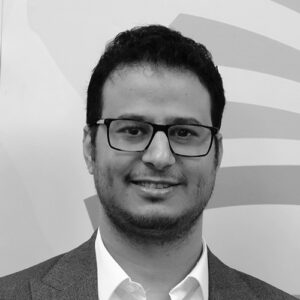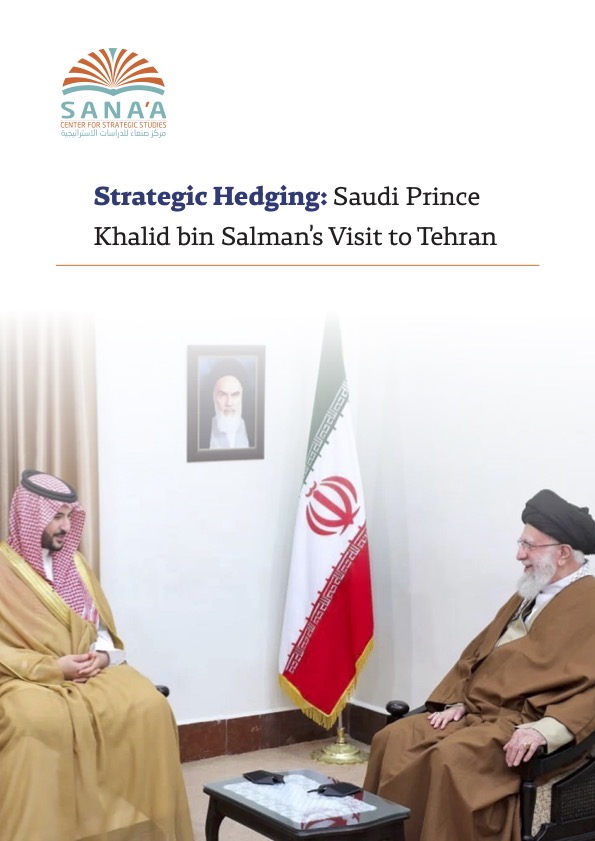All eyes were on the Iranian capital, Tehran, where Saudi Defense Minister Prince Khalid bin Salman arrived on April 17. His visit, during which he was accompanied by several other senior Saudi officials, including Mohammed al-Jaber, the Saudi Ambassador to Yemen, is the most significant development in Saudi-Iranian relations since the China-brokered rapprochement between the two countries in 2023.
Prince Khalid’s trip signals a qualitative shift in Saudi Arabia’s approach to its regional relationships, particularly with its long-time rival, Iran. On a historical level, the symbolism of the visit is unmistakable. Since the Iranian Revolution in 1979, only one Saudi defense minister has visited Iran—Prince Sultan bin Abdulaziz in 1999. That visit produced two major outcomes: an unprecedented visit by Iranian President Mohammad Khatami to Saudi Arabia, and the signing of a security agreement that remained dormant until it was reactivated in 2023 following the Beijing agreement.
The visit comes at a politically complex moment, one filled with opportunities to reshape the regional landscape. It also reflects the rise of Crown Prince Mohammed bin Salman’s younger brother as a central player in Saudi foreign policy. Since assuming the role of defense minister, he has overseen some of the most complex and sensitive files: relations with the United States, the Yemen portfolio, the situation in Syria and Lebanon, and now the relationship with Iran. The transfer of the Iran file from National Security Advisor Musaad al-Aiban to Prince Khalid signals that Tehran will no longer be treated as a peripheral or special case, but rather as a core element in Saudi strategic calculations. The trip also follows positive signals in the relationship between the two countries. In November 2024, the Chief of the Saudi General Staff, Fayyad al-Ruwaili, visited Tehran and met with his Iranian counterpart—a clear indication of a desire to open channels on military concerns, or at least to build bridges of understanding.
At the same time, indirect talks between Washington and Tehran are progressing, with the first round held in Muscat and further talks planned in Rome for the weekend, amid what is being described as a “positive” atmosphere. Riyadh’s initiative seems aimed at ensuring that it is not left out of whatever benefits might emerge from the US-Iran talks.
From this perspective, the visit can be viewed as part of a broader Saudi hedging strategy, designed to prepare the Kingdom for a range of possible scenarios — from a new nuclear agreement to military escalation. Riyadh is aiming to position itself as the center of regional power dynamics by diversifying its options and restoring relations with former adversaries. This approach reflects a growing recognition that relying exclusively on Washington is no longer sufficient. Riyadh is keenly aware that it was kept in the dark during negotiations that led to the 2015 nuclear deal, which resulted in an imbalanced regional situation that threatened its national interests. That sense of insecurity ultimately contributed to its decision to intervene militarily in Yemen against the Houthis. When President Trump withdrew the US from the deal during his first term, Saudi Arabia found itself paying the price again, with its energy infrastructure targeted and its internal security threatened. As such, the kingdom will not tolerate a repeat of this pattern.
In this context, Saudi Arabia’s public refusal to get involved in a military operation against the Houthis in Yemen just a day before Prince Khalid’s visit can be interpreted as a strategic move. This comes despite previous media reports by Saudi outlets about an “impending battle.” The UAE has also denied preparing for a military operation, highlighting the differing approaches of the Gulf states and Washington. It seems that Riyadh is attempting to distance itself from escalation while opening a window of understanding with Tehran. This could facilitate a new settlement, granting Riyadh indirect influence over the Houthis, who remain allied with Iran.
This dynamic is closely linked to Saudi Arabia’s ambition to play a role in US-Iran negotiations. During a trip to Washington, Prince Khalid expressed Riyadh’s readiness to act as a mediator. It is likely that a proposal for a “P5+2” deal, with Saudi Arabia as a party to an agreement along with Iran and the permanent members of the UNSC, will be discussed in Tehran. In such a scenario, Riyadh would likely host the signing ceremony, which would be seen as both a symbolic and political victory that reinforces the Kingdom’s aspirations to become a diplomatic power with international influence.
Saudi Arabia’s desire for a direct role in talks is not without precedent. In the late 1990s, when it picked up on signs of openness between the Clinton administration and Tehran, it sent Prince Sultan to Iran—an act that later paved the way for President Khatami’s visit to the Kingdom. In 2023, Saudi Arabia quickly moved to reactivate an old security agreement and sign a reconciliation deal with Iran under Chinese sponsorship, in parallel with the Biden administration’s resumption of negotiations with Tehran. In each instance, the goal was the same: to avoid being surprised by developments or having them imposed without its involvement.
The success of this visit will be measured in the short term by a number of indicators. These could include an official visit by Iranian President Masoud Pezeshkian to Riyadh; discussions around a joint defense agreement; a decline in political and media agitation related to a looming ground operation in Yemen; concessions from the Houthis in line with Saudi-American preferences; and progress in a proposed Lebanese dialogue aimed at bringing Hezbollah’s arms under state control.

 اقرأ المحتوى باللغة العربية
اقرأ المحتوى باللغة العربية
